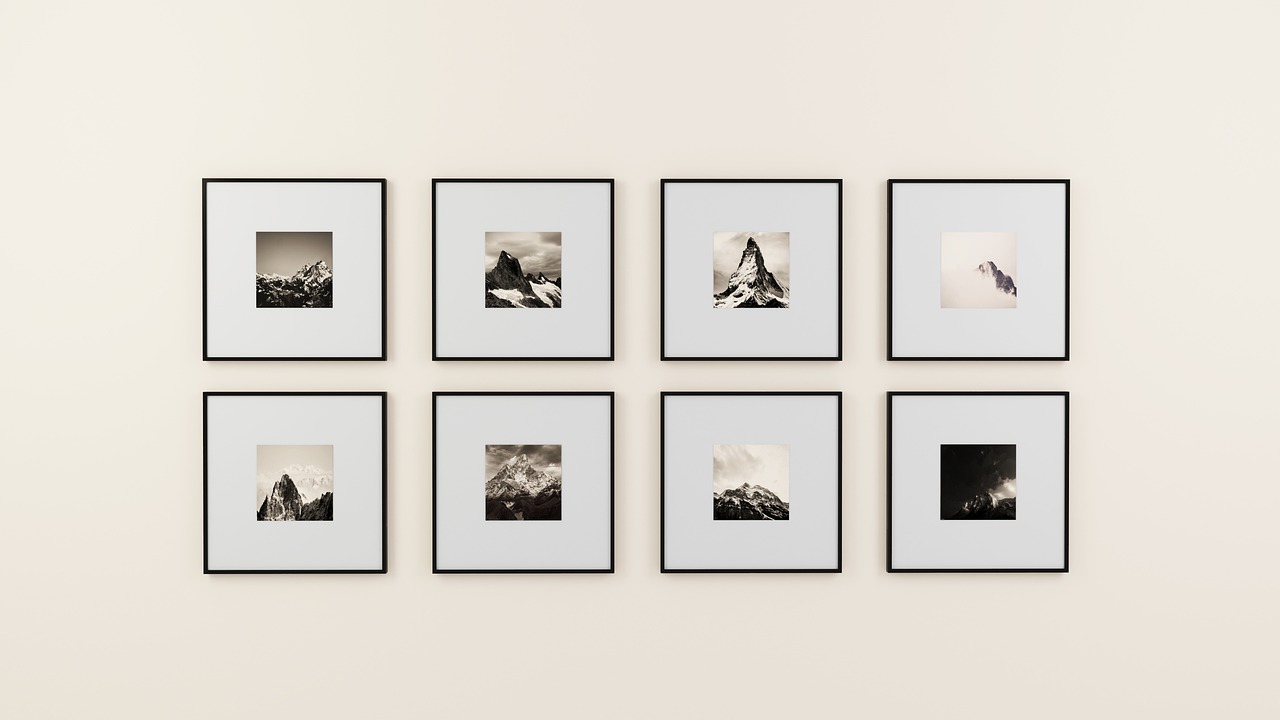When hanging a picture on a plaster wall, precision is key.
Starting with sturdy studs is essential for secure placement, but the challenge lies in pinpointing them accurately.
Magnetic stud finders can simplify this task, aiding in locating stable spots for your artwork.
However, the real artistry comes in selecting the right anchors and hangers for your specific piece.
Understanding the weight and dimensions of your frame will guide you in choosing the appropriate support system.
Here are some tips and guides in hanging pictures on plaster walls to add a touch of elegance and personality to your space.
Locating Studs for Hanging Pictures
To guarantee your pictures hang securely on plaster walls, begin by using a magnetic stud finder to locate the sturdy anchors within the wall.
Studs in plaster walls are typically spaced 16 inches apart, making it important to find them for proper picture hanging. When locating studs, make sure you move the stud finder horizontally along the wall until it indicates the presence of a stud.
Once the stud finder identifies the stud’s location, mark it with a pencil. This step is essential as it allows you to position your picture hook or wall anchor securely.
Using a stud finder not only helps prevent damage to your plaster walls but also ensures a stable and secure anchor for hanging pictures.
Remember that knocking on the wall and listening for a hollow sound can indicate the absence of a stud, emphasizing the importance of using a magnetic stud finder for accurate results.
By accurately locating studs, you can hang your pictures with confidence, knowing they’re well-supported and secure on your plaster walls.
Choosing the Right Wall Anchors
When selecting wall anchors for your plaster walls, make sure you opt for Molly Bolts or Toggle Bolts to securely hold heavier picture frames. These types of anchors are specifically designed to support the weight of items on plaster walls.
Molly Bolts have a sleeve that expands behind the wall to provide extra stability, while Toggle Bolts feature a spring-loaded mechanism that opens up once behind the wall for a secure hold.
Make sure the wall anchors are long enough to penetrate through the plaster and lath layers to maximize their support capacity.
To enhance the security of the wall anchors, consider using wall anchor setting tools.
These tools help guarantee that the anchors are properly installed and tightly secured to prevent any accidents when hanging a picture. It’s important to select the right type of wall anchor based on the weight and size of the picture frame to avoid any damage to your plaster walls.
Properly tightening the screws that secure the wall anchors is essential for stability.
Selecting Picture Hangers
Consider the weight and size of your picture frame to determine the most suitable picture hangers for secure placement on your plaster walls.
For lightweight frames, adhesive hooks are a practical choice as they’re important on plaster surfaces and provide ample support.
Brass hooks are a popular option known for their sturdiness and ability to securely hold picture frames on plaster walls.
If you’re looking for a more dynamic hanging solution, gallery systems offer a sophisticated and adaptable way to display your artwork without causing damage to your plaster walls.
When choosing hangers, make sure they can bear the weight of your picture frame to prevent accidents and maintain stability.
It’s important to select hangers that match the size and weight of your frame to guarantee a secure fit on your plaster walls.
Weighing Your Picture Properly
Weigh your picture accurately using a bathroom scale to determine the suitable hanging method for displaying it securely on your plaster walls.
Knowing the weight of the picture is important in ensuring that the chosen hanging hardware can support it effectively. By weighing the picture, you can select the right adhesive hook, anchor, or nail size for secure hanging without damaging your plaster walls.
The weight of the picture plays an important role in deciding whether to use adhesive hooks, anchors, or even drill a hole for a more robust hanging solution.
Lightweight pictures may be suitable for adhesive hooks, while heavier ones may require anchors or drilling. Understanding the weight of your picture allows you to make an informed decision on the most appropriate method for secure hanging on plaster walls.
Before proceeding to hang a picture, take the time to weigh it accurately. This simple step can make a significant difference in achieving a secure and stable display on your plaster walls, ensuring your picture stays safely in place for years to come.
Executing Picture Hanging Techniques
To guarantee a secure and stable display of your picture on plaster walls, begin by locating studs for stability using a stud finder.
Once you’ve found the studs, determine the appropriate picture hanger or hook based on the weight of your picture.
Before hammering nails or inserting screws, pre-drill small holes to prevent plaster damage. For added support, especially with heavier frames, consider using wall anchors like Molly Bolts or Toggle Bolts.
To avoid a messy cleanup, use painter’s tape to mark the hanging spot and catch debris while drilling into the plaster.
Make sure the hooks or hangers you choose have the necessary weight capacity to support your picture.
Double-check the stability of your hanging system before letting go of the picture to prevent accidents and potential damage to your plaster walls.
With these techniques, you can securely hang your picture on plaster walls without risking instability or plaster damage.
Conclusion
Now that you have located the studs, chosen the right anchors, selected the perfect picture hangers, weighed your picture properly, and executed the hanging techniques, your picture is securely and beautifully displayed on your plaster wall.
By following these steps and ensuring proper installation, you can enjoy your artwork without worrying about it falling or causing damage to your wall.
Happy decorating!


Leave a Reply